|
|
 |
What is the Paleolithic Diet?
For most of the million or so years humans have existed, we've been hunter-gatherers. Our ancestors hunted game and ate lots of meat. They also gathered whatever fruits, vegetables, nuts, and berries were in season. They were nomads, followed the sources of food, and did not grow crops. Over hundreds of thousands of years, our ancestors became superbly adapted to this diet and lifestyle.
The agricultural lifestyle came along about ten thousand years ago. Archeological records show there was a sharp decline in stature and health that went along with the change to the agricultrual diet and lifestyle. Early hunter-gatherers were 4 to 6 inches taller than early farmers, had stronger bones, fewer cavities, and lived longer lives. Hunter-gatherers were rarely obese and had low rates of autoimmune diseases like arthritis and diabetes.
Yet despite overall poorer health, the farmers took over the world. This happened because hunter-gatherers had children, on average, only every 3 to 4 years, while farmers had theirs every 11 months. Hunting and gathering only works for small groups of people. Once a few people could produce food for many, others were freed to become artisans, soldiers, and bureaucrats and more. A thousand soldiers supported by ten thousand slaves toiling in the fields became the new super weapon. The old time hunter-gatherers were simply out-organized and out-bred. As more land was converted into crops, the animals and those who still followed them were driven off.
In spite ten-thousand years of farming, all of us still have the hunter-gatherer DNA. We are not gentically optimized to eat many of the agricultural foods in our present diet. As a result, many of us become obese or more likely to suffer from autoimmune diseases like diabetes, heart disease, arthritis, and allergies.
The Paleolithic Diet
The rules of the Paleolithic Diet are simple: only eat what was available to the early hunter-gatherers. All other foods should be avoided.
Don't eat:
- Grains -- including bread, pasta, and noodles
- Beans -- including string beans, kidney beans, lentils, peanuts, snow-peas and peas
- Potatoes
- Dairy products
- Sugar
- Salt
Do eat:
- Meat, chicken and fish
- Eggs
- Fruit
- Vegetables (especially root vegetables, but not potatoes or sweet potatoes)
- Nuts (walnuts, brazil nuts, macadamia, almonds). Don't eat peanuts (a bean) or cashews (a family of their own).
- Berries (strawberries, blueberries, raspberries, etc.)
Expect some minor adjustment problems, but don't worry, you can deal with them!
- It will take time to adjust to the changes. There's a surge in your vitamin intake and a decrease in your toxin intake.
- Start with breakfast, then move on to lunch or dinner, then to all 3 meals. Don't try to change all at once. If you work, take your lunch to work.
- Continue to educate yourself. There are many dietary myths you'll have to unlearn, particularly about the inclusion of fat in your diet.
On this diet you don't count calories or carbs. You eat when you're hungry and stop when you're full. Snack as much as you want on nuts and fruit. Any food of any kind from the "Do Eat" list is fine. All foods from the "Do Not Eat" category are forbidden. It takes some will power at first, but after a week or two the cravings for the old foods go away.
Grains, Beans and Potatoes
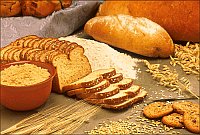 Grains, beans and potatoes share the following important characteristics: Grains, beans and potatoes share the following important characteristics:
- They are all toxic when raw. Toxins include enzyme blockers, lectins and others.
- Cooking destroys most -- but not all -- of the toxins. Insufficient cooking can lead to sickness.
- They are all rich sources of carbohydrates and rapidly digestible, giving them a high glycemic index (sugar spike).
- They are poor sources of vitamins (particularly vitamins A, B-group, folic acid and C), minerals, antioxidants and phytosterols
Beans, grains and potatoes are full of enzyme blockers and lectins. Potatoes also contain another amily of toxins called glycoalkaloids. Glycoalkaloids, unlike lectins and enzyme blockers, aren't destroyed by cooking.
Enzyme Blockers
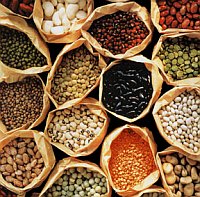 Enzyme Blockers block the enzymes that digest protein (proteases) and are called "protease inhibitors". They can affect the stomach small intestine. Some enzyme blockers affect the enzymes that digest starch (amylase) and are called "amylase inhibitors". Enzyme Blockers block the enzymes that digest protein (proteases) and are called "protease inhibitors". They can affect the stomach small intestine. Some enzyme blockers affect the enzymes that digest starch (amylase) and are called "amylase inhibitors".
When grains, beans and potaties are cooked, most of the enzyme blockers are destroyed (but some aren't). In humans, high levels of protease inhibitors lead to increased secretion of digestive enzymes by the pancreas. Even if the effect is only a small increase, over many years it adds up to a lot of extra work for your body.
Lectins
Lectins (Haemagglutins) are natural proteins that have a large variety of roles. Lectins have the ability to stimulate cell receptors, causing a variety of responses and have a knack for bypassing our defenses, traveling all over the body causing harm. They can, for example:
- strip protective mucus off tissues
- damage the cells lining the small intestine, disrupting the microscopic fingers called villi and microvilli
- bind to cells, including blood cells, causing a clot to form
- make a cell act as if it has been stimulated by a hormone
- stimulate a cell to secrete a hormone
- promote cell division at the wrong time
- cause gowth or shrinkage of lymphatic tissue
- cause enlargement of the pancreas
- cause cell death (apoptosis)
In beans, lectins act like a glue to enable nitrogen-fixing bacteria to bind to the roots of the plant.
Exorphins
Exorphins are food chemicals that have morphine-like activity. They're found in dairy products and wheat. Our body has its own natural morphine-like substances called endorphins. Endorphins are very important in controlling pain and addictive behaviour. Exorphins act on endorphin receptors and may stimulate them or block them. It is logical that exorphins may therefore affect chronic pain and also affect addictive behaviour. This may explain why you get this carb cravings!
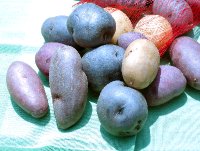 Glycoalkaloids
The principle glycoalkaloids in potatoes are a-solanine and a-chaconine. They contribute flavor to potatoes but at higher concentrations cause bitterness and are toxic to humans. Their natural function is probably to serve as stress metabolites or phytoalexins for the protection of the potato when attacked by insects, fungi, etc. Concentrations of glycoalkaloids are 3 to 10 times
greater in the peel than in the flesh.
Potato alkaloids exert their toxic effects on the nervous system by interfering with the body's ability to regulate acetylcholine, a chemical responsible for conducting nerve impulses. Potato glycoalkaloids also act by general disruption of membranes, and symptoms of solanine toxicity include headache, nausea, fatigue, vomiting, abdominal pain and diarrhea. Cooking potatoes does not destroy the
solanine.
Paleolithic Diet Summary
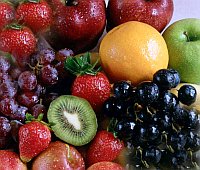 This diet turns the old food pyramid upside-down, but it works. Take the growing popularity of Atkins and other low carbohydrate diets. In spite of what the "experts" say, people are losing weight and feeling good on these diets. All of these diet plans restrict high carbohydrate foods like bread, refined sugar, and pasta. The Paleolithic Diet is what ties all the low carb diets together by explaining how they work from the perspective of evolution and genetics. This diet turns the old food pyramid upside-down, but it works. Take the growing popularity of Atkins and other low carbohydrate diets. In spite of what the "experts" say, people are losing weight and feeling good on these diets. All of these diet plans restrict high carbohydrate foods like bread, refined sugar, and pasta. The Paleolithic Diet is what ties all the low carb diets together by explaining how they work from the perspective of evolution and genetics.
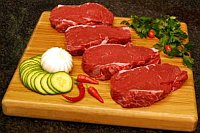 It's hard to convince people that what they've been hearing about nutrition all their lives is wrong. We live in an agricultural society. What we eat is a big part of our culture, politics, and even religion. We can never return to the old hunter-gatherer lifestyle (who would want to?) we can learn to look at our diet from an evolutionary perspective and decide which foods and practices we keep and which we throw away. It will change your life. It's hard to convince people that what they've been hearing about nutrition all their lives is wrong. We live in an agricultural society. What we eat is a big part of our culture, politics, and even religion. We can never return to the old hunter-gatherer lifestyle (who would want to?) we can learn to look at our diet from an evolutionary perspective and decide which foods and practices we keep and which we throw away. It will change your life.
The most important thing to keep in mind is that this diet is a permanent change to your lifestyle. It takes a commitment from the start. You can never go back to the old way of eating. After the initial periord of adjustment it will be easy for you to follow the diet. Once you see the effect on your weight and health you'll have no desire to go back!

|
|
|
